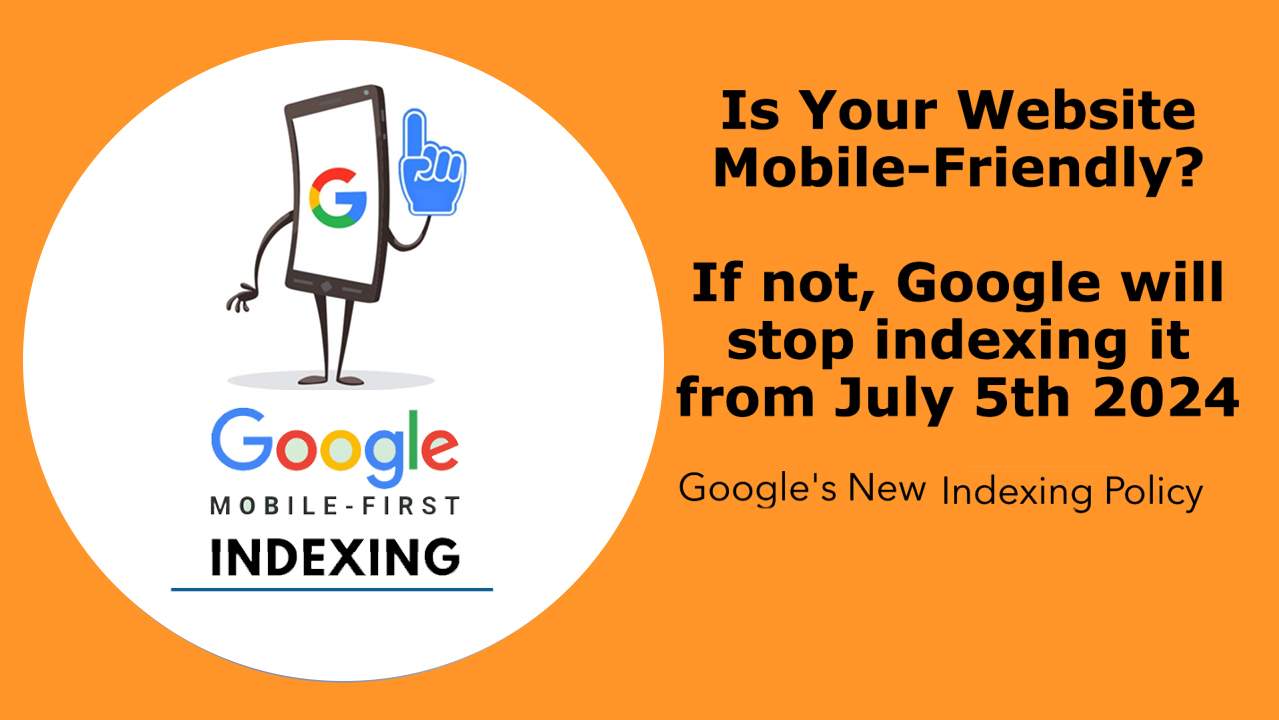
Is Your Website Ready for Google’s Mobile Indexing Rule Starts July 5th
Google will no longer rank if the website is not accessible on Mobile phones or if your website is not fully ready for phones from July 5th. This is important news for business websites or developers. Google finalized its decision once again for its new indexing rule.
Mobile-First Indexing Journey
Initial Indexing for Mobile and Desktop, The move to mobile-first indexing, however, did not take popularity until early 2016, when Google began giving crawling for mobile devices priority over desktop. It came about by the growing number of people utilizing mobile devices to access the internet worldwide. Google stated that many websites might have been switched to mobile-first crawling by October 2021, however, the transition was not finished, and a last “white glove” push is scheduled for July 5, 2024.
John Mueller, a senior webmaster trends analyst at Google, also described this last phase in a blog post this year. “As of 5 July 2024, the small set of sites we’ve still been crawling with desktop Googlebot will be crawled with mobile Googlebot. Any remaining sites that had previously been crawled by desktop Googlebot will be switched to only mobile crawling.”
What does this mean for the websites?
It means if your website is not accessible on mobile, then it will not be visible on Googlebot. If it is not visible on Googlebot, it will no longer be able to index. Mueller’s statement appears to support the idea that information on your website that is completely inaccessible on a mobile device will no longer be indexable.
The mobile version of your website should function and load on a mobile device. Websites that load and even display on mobile devices are accessible; they can still be easily found and used on a smartphone or tablet even if they do not have dedicated mobile versions with a mobile theme.
Get Ready for the Change
Take the following actions to ensure that Google keeps listing your website:
Check if your website is accessible for mobile devices. Google has a useful tool called Mobile-Friendly Test that checks how your website is shown on mobile devices. You will be able to see where your website is failing to effectively serve mobile consumers.
- Accelerate Load Times: Mobile consumers place a premium on quick loads. To find out how to speed up load times on mobile devices, use tools like Google PageSpeed Insights.
- Use Responsive Design: Make sure your website functions properly across a wide range of screen sizes and orientations by following to responsive web design best practices.
- Cross-Device Testing: To make sure that all of your users can access your website, make sure it occasionally functions consistently across a variety of devices and browsers.
- Take a look at Google Search Console: The URL Inspection tool inside the search console could show to you how Googlebot sees your website by informing you about issues and providing details about how your site appears on mobile devices.
What If Your Site Is Not Ready?
If your website is not mobile-friendly by July 5th, it will not necessarily be the end of the world, but it can negatively impact your SEO rankings, which will have a big impact on website traffic and exposure. Sites that do not display properly on smartphones and tablets will no longer be indexed by search engines.
There is less risk for websites that still run on mobile devices but are still accessible through desktop browsers, but making the move to a mobile-friendly web design can protect your site against future Google updates and increase user experience for your visitors.
Desktop Crawling Goes On
Google is maintaining the Googlebot Desktop crawler operational for some content categories (such as product listings and Google for Jobs data) despite the massive and mostly mobile-first shift. Put differently, certain facets of the desktop crawling process can still be visible in your server logs and reports.
The Reason This Is Important
Most website developers and owners won’t find this difficult, but if you deal with a customer, whose site doesn’t display on mobile devices, make sure they fix it right away. Use the Google Search Console URL Inspection tool to ensure that your website and all of its pages load on mobile devices. Mobile should now be a component of your SEO plan.
To Sum Everything Up
A major development in the online environment is the move to mobile-first indexing, which will need that website to be responsive starting on July 5, 2024. This change affects user experience in addition to SEO. By taking care of these problems, you can make sure that your website stays current, draws visitors, and expands your business.


